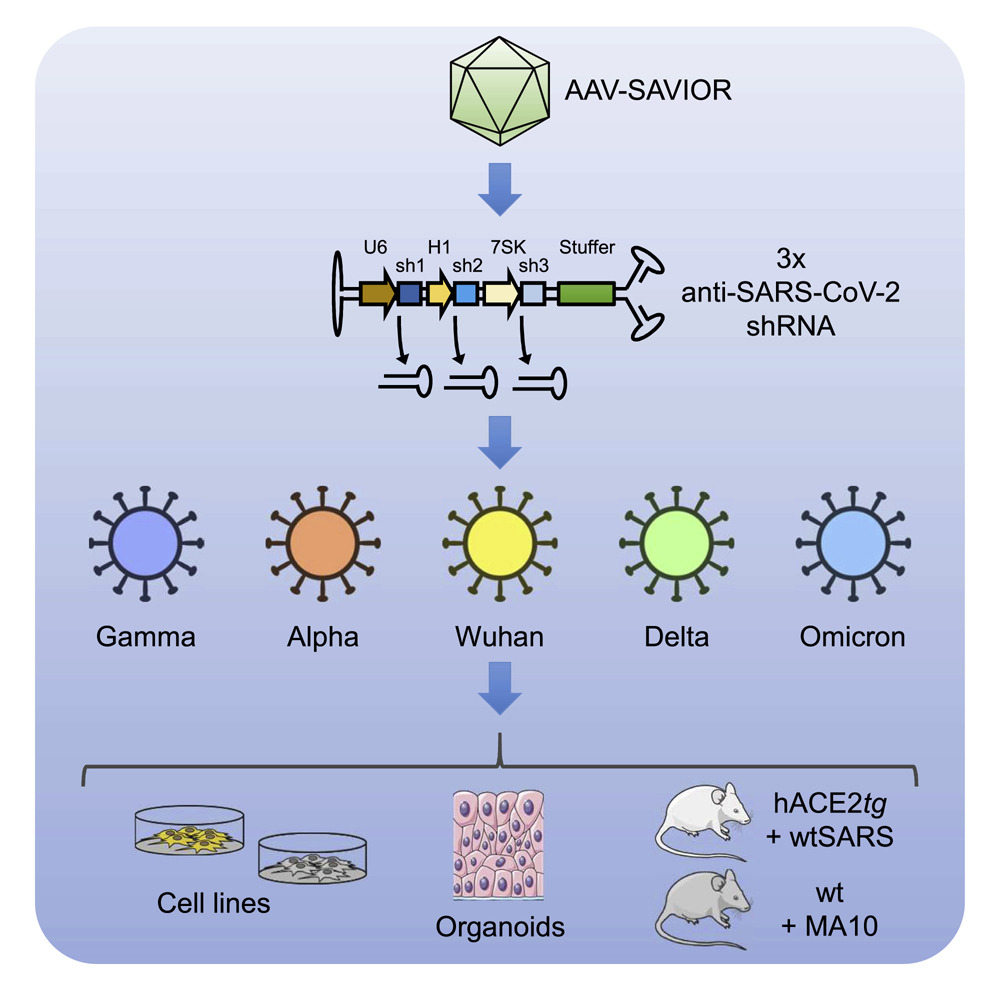
Mol Ther, Jan 2022
Becker Jonas, Stanifer Megan Lynn, Leist Sarah Rebecca, Stolp Bettina, Maiakovska Olena, West Ande, Wiedtke Ellen, Börner Kathleen, Ghanem Ali, Ambiel Ina, Tse Longping Victor, Fackler Oliver Till, Baric Ralph Steven, Boulant Steeve, Grimm Dirk,
Ex vivo and in vivo suppression of SARS-CoV-2 with combinatorial AAV/RNAi expression vectors.
Despite rapid development and deployment of vaccines against severe acute respiratory syndrome coronavirus 2 (SARS-CoV-2), clinically relevant modalities to curb the pandemic by directly attacking the virus on a genetic level remain highly desirable and are urgently needed. Here we comprehensively illustrate the capacity of adeno-associated virus (AAV) vectors co-expressing a cocktail of three short hairpin RNAs (shRNAs; RNAi triggers) directed against the SARS-CoV-2 RdRp and N genes as versatile and effective antiviral agents. In cultured monkey cells and human gut organoids, our most potent vector, SAVIOR (SARS virus repressor), suppressed SARS-CoV-2 infection to background levels. Strikingly, in control experiments using single shRNAs, multiple SARS-CoV-2 escape mutants quickly emerged from infected cells within 24-48 h. Importantly, such adverse viral adaptation was fully prevented with the triple-shRNA AAV vector even during long-term cultivation. In addition, AAV-SAVIOR efficiently purged SARS-CoV-2 in a new model of chronically infected human intestinal cells. Finally, intranasal AAV-SAVIOR delivery using an AAV9 capsid moderately diminished viral loads and/or alleviated disease symptoms in hACE2-transgenic or wild-type mice infected with human or mouse SARS-CoV-2 strains, respectively. Our combinatorial and customizable AAV/RNAi vector complements ongoing global efforts to control the coronavirus disease 2019 (COVID-19) pandemic and holds great potential for clinical translation as an original and flexible preventive or therapeutic antiviral measure.
Visit Journal